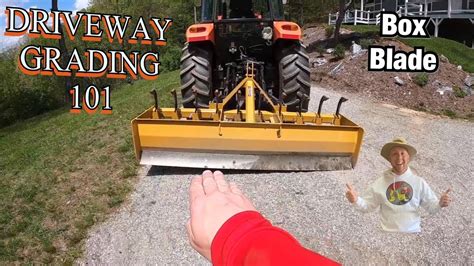How to Grade a Clay Driveway Without a Tractor
A clay driveway, while offering a cost-effective and durable option, requires proper grading to prevent water damage and ensure smooth driving. While a tractor makes the job significantly easier, it's entirely possible to grade a clay driveway without one, using manual labor and readily available tools. This guide will walk you through the process, offering tips and techniques for achieving a professional-looking result.
Why is Grading a Clay Driveway Important?
Before diving into the how-to, let's understand why grading is crucial. Improperly graded clay driveways are prone to:
- Puddling and erosion: Water pooling on the surface leads to erosion, creating ruts and potholes, damaging the driveway's structure.
- Freeze-thaw damage: Water trapped in the clay expands when it freezes, causing cracking and further deterioration.
- Muddy conditions: Poor drainage results in a muddy mess, especially during wet weather.
- Uneven surface: An uneven surface makes driving uncomfortable and potentially dangerous.
Proper grading ensures proper water runoff, preventing these issues and extending the life of your driveway.
Tools and Materials You'll Need:
- Shovel: A sturdy shovel is essential for moving and shaping the clay.
- Rake: A landscape rake is helpful for smoothing out the surface.
- Level: A long level (at least 4 feet) will ensure accurate grading.
- Hand tamper: This tool compacts the clay, improving its stability.
- Wheelbarrow: For transporting excess clay.
- Measuring tape: For accurate measurements and establishing grade.
- Garden hose: For checking drainage after each grading stage.
- Gravel (optional): Adding a layer of gravel can enhance drainage.
How to Grade a Clay Driveway Manually:
-
Clear the area: Remove any debris, weeds, or existing vegetation from the driveway surface.
-
Establish the grade: Determine the desired slope for water runoff. A general guideline is a 1-2% slope away from the house. Use your level and measuring tape to establish consistent grading across the driveway's length and width. Mark your desired grade with stakes and string if needed.
-
Excavate and Shape: Using your shovel, carefully remove excess clay from high points and add it to low points, working towards your established grade. Take your time and frequently check your work with the level to maintain consistent slope.
-
Compact the clay: Once the clay is shaped to the desired grade, use the hand tamper to compact it thoroughly. This helps prevent settling and ensures a stable surface. Work in small sections to maintain consistent compaction.
-
Smooth the surface: Use the rake to smooth out any bumps or irregularities left by the shovel and tamper. This step ensures a smooth, even driving surface.
-
Test drainage: Use the garden hose to simulate rainfall. Observe how the water flows across the surface. Adjust the grade as necessary to ensure proper drainage away from buildings.
-
Optional: Add gravel: For improved drainage, consider adding a layer of gravel. This will help prevent water from pooling on the clay surface.
Maintaining Your Graded Clay Driveway:
Regular maintenance is crucial for preserving your graded driveway's condition:
- Repair ruts and potholes promptly: Address any damage as soon as it appears to prevent further deterioration.
- Monitor drainage: Regularly inspect the driveway for any signs of poor drainage and make necessary adjustments to the grade.
- Avoid overloading: Heavy vehicles can cause damage to a clay driveway.
Can I Grade a Clay Driveway Myself?
Yes, absolutely! While a tractor is more efficient for large areas, a smaller driveway is manageable with manual labor. The key is patience, attention to detail, and the proper use of tools.
What are the best tools for grading a clay driveway without a tractor?
A sturdy shovel, a level, a hand tamper, and a rake are essential for manual grading. A wheelbarrow will also make moving materials much easier.
How much slope should a clay driveway have?
Aim for a 1-2% slope away from your house. This gentle slope ensures proper water runoff and prevents water accumulation.
This comprehensive guide provides detailed steps and answers common questions, empowering you to successfully grade your clay driveway without specialized equipment. Remember, patience and attention to detail are key to achieving a smooth, durable, and long-lasting driveway.

